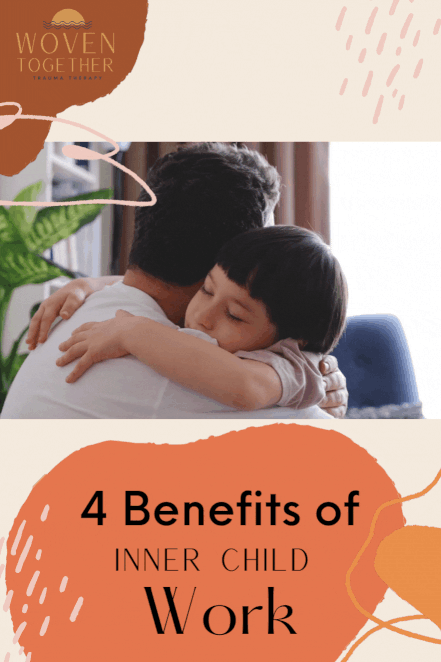4 Benefits of Inner Child Work
Inner child work is a style of therapy that focuses on addressing unmet childhood needs and healing attachment wounds while exploring how the inner child shows up in your adult life. A common culprit of inner child wounds is Relational Trauma. Emotionally wounded children who haven’t been given the nurturing, love, and safety they need often develop into adults who still hold that pain in their bodies--even if they’ve gotten really good at masking it, burying it, or using it to fuel productivity or success.
Why inner child work?
This work feels so empowering because it allows you to access buried pain that continues to hurt and guide your decision-making. We need access to our wounds before we can heal. When there is early trauma, healing often means finding your inner child, acknowledging and tenderly caring for their wounds, and learning how to support them as they heal.
How do I know if my inner child is hurting?
Have you noticed any distressing patterns in your relationships? When you have unresolved childhood wounds, this typically shows up in relationships. The more intimate the relationship, the more likely you are to have major challenges that come up around vulnerability, trust, bonding, conflict resolution, or regulating your nervous system when things get intense.
Inner child wounds also look like:
Terror of abandonment
Urges to escape or run away
Intense fear of what might happen if you say what you really want or need
Emotional disconnection from your partner
Seeing relationship commitment as too risky or dangerous
Seeing yourself or your needs as less important
Questioning whether you’re capable of having a fulfilling relationship
4 benefits of inner child work:
1. Understanding the pain.
Learning the extent of the hurt is only possible by sitting with the hurt person and creating space to talk about, feel, and process the pain—at whatever age it occurred. As a trauma therapist, I do this by focusing on safety in our relationship, slowly peeling back the layers and years of hurt, and processing each new discovery—never moving beyond your pain threshold.
2. Discover your boundaries.
Inner child work is a dynamic process. Your needs may change from session to session as we work with memories, experiences, or traumas that happened at different ages. As we do this, we get to learn what you need at different developmental time points. I help you to notice your emotional age in session, and we work on drawing boundary lines for the different versions of yourself that might show up—always without judgment or shame for what those needs are.
3. Move toward wholeness.
Childhood trauma can leave people feeling fragmented - like there isn’t space for all parts of the self. If you’ve ever felt like you were living a fragmented life, it’s possible that at one point in time, you needed to disown or ignore a part of yourself in order to survive. Inner child work is a lot like searching the woods for a lost child, eventually reuniting him with his adult self, and learning to safely coexist.
4. Identify narcissistic abuse.
In order to cope with childhood chaos, survivors sometimes develop trauma response patterns that leave them vulnerable to toxic relationships or narcissistic abuse. This is especially true if survivors are desensitized to narcissistic behavior due to their past experiences of this being normal. I use inner child work to help you explore your trauma response patterns and how they developed, how they helped you to survive, and also how they might give us present-day clues about safe versus dangerous relationships.
Would you like help getting to know your inner child, or want help working through your trauma? California residents can book a free consultation with our therapist matchmaker to find the therapist who’s the best fit for you. We provide online therapy and have therapists who are trained in EMDR therapy. We also offer many different types of trauma therapy groups. All of our therapists specialize in trauma-informed care and informed trauma therapy.
All therapists at Woven Together Trauma Therapy are trauma-informed and specialize in treating all forms of trauma. We also offer EMDR, Ketamine Assisted Psychotherapy, and Brainspotting which has shown to be extremely effective in treating and healing trauma. Want to read more about our unique therapy options?
These blogs talk more about the basics of EMDR:
You can read more about Ketamine Assisted Psychotherapy here:
If you would like to learn more about Brainspotting, check out our blog: What is Brainspotting?





